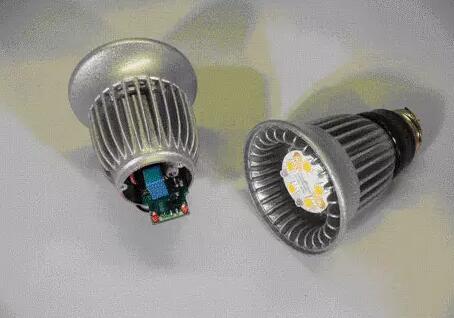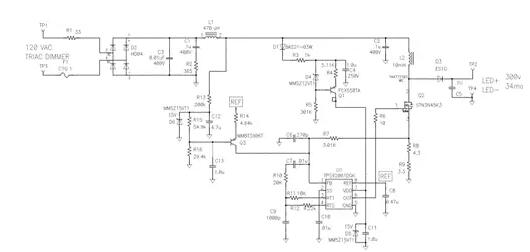
Figure 1 Lamp replacement makes the power supply space extremely small
Figure 2 shows a non-isolated circuit that powers the LEDs through a 120 volt AC supply. It contains a rectifier bridge that powers the buck power stage. The buck regulator is an "inverted version" with its power switch Q2 in the loop and loop diode D3 connected to the power supply. The current is regulated by a source resistor while the power switch is on. Although this is quite efficient (80%-90%), this circuit has several drawbacks that limit efficiency. When turned on, the power switch must carry all of the output current, and when the power switch is turned off, the output current flows through the loop diode. In addition, the current sense resistors R8 and R10 have a voltage of approximately 1 volt. All three voltage drops are large compared to the 15 to 30 volt LED voltage and can limit power efficiency. More importantly, these losses will promote the temperature rise of the bulb. The ability of the LED to illuminate slowly, and this ability is closely related to the operating temperature of the LED. For example, at 70oC, the LED light output is reduced by 30% for more than 50,000 hours, and at 80oC, this time is only 30,000 hours. Since the bulbs are mounted in some "cylinders" which tend to block heat dissipation, which is detrimental to convective cooling, the heating problem is further complicated.

Figure 2 Buck regulator implements a simple offline LED driver
LED manufacturers create higher-voltage illuminators by placing several LEDs in series on a common substrate. These high-voltage illuminators bring either lower cost or higher power efficiency. With these high voltage products, we only need to use a set of rectifiers and a current-stabilizing resistor to achieve a lower cost power supply method. Although this type of power supply can produce a fairly good power factor, the efficiency is low because a large portion of the input voltage is used on the current stabilizing resistor, resulting in 30%-50% of the LED power loss. However, it can be used in some small-volume, low-power applications. However, in some high-power applications, inefficiency makes it useless. Figure 3 shows another alternative: it uses a boost supply. Most of this circuit is identical to the above method. However, switching, diode and current sensing losses are much smaller, resulting in efficiencies as high as 90% to 95%. In addition, the circuit has a good power factor of 97%.

Figure 3 boosting LED driver efficiency with boost power
Figure 4 is a photograph of the power supply depicted in the schematic of Figure 1-2. Even though this type of power supply produces approximately the same output power, there are some significant differences that affect the size of the power supply. The inductor size of the boost supply is significantly smaller because of its lower energy storage requirements. The buck power supply has a larger resistor than the boost supply. The resistor is an emulated load resistor (R20 shown in Figure 2) that determines when the dimmer turns on the silicon controlled rectifier (SCR). The reason for this is that the dimmer has an electromagnetic interference (EMI) suppression capacitor next to the triac, which has a higher voltage than the power supply under no load conditions. This disturbs the power supply and causes unstable dimming. This is not required when using a boost supply because the LED is connected to the input through a boost inductor to provide sufficient load, so the above problem is not an issue. The back of the board is not shown, but as shown in the schematic, the buck power supply has more low-level circuitry. Therefore, boost power supplies have lower power consumption, which is extremely important in space-constrained applications such as LED bulb replacement.

Figure 4 Boost power supply is smaller and more efficient
In summary, high-voltage LEDs help increase the life of screw-in LED bulbs due to their low power consumption and low temperature rise. It is achieved by using a boost power supply instead of a buck power supply to increase power efficiency. The boost power supply is about half the loss of the buck regulator. In addition, the boost supply has fewer components, a better power factor, a smaller footprint, and easier dimming with a triac.
Head Earphone,Head Earphones,Bass Head Earphones,Head Earphone Price
Newmax Electronics Co.,LTD , https://www.fspeaker.com